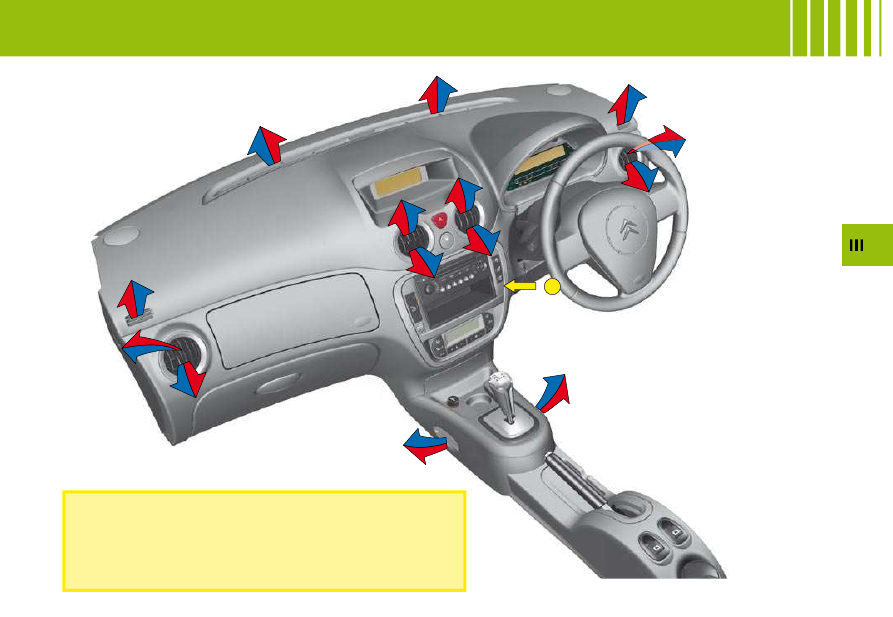Citroen C3 Pluriel (2008 year). Instruction - part 5

A
67
Warning: The automatic air conditioning system uses
a temperature sensor located on the dashboard (see
reference A), this sensor should not be obstructed.
V E N T I L AT I O N - H E AT I N G